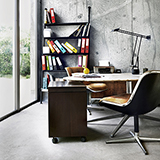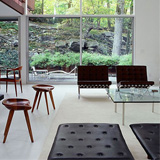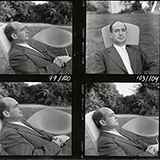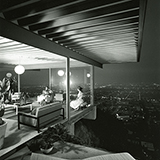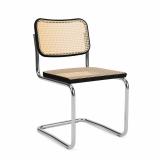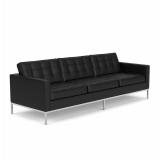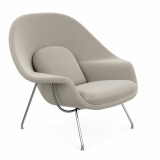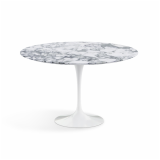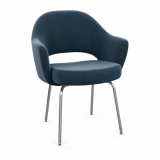Tanja Hollander
The photographer reflects on her four-year project Are you my friend?
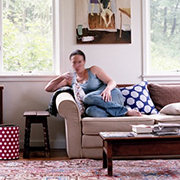
On New Year's Eve 2010, photographer Tanja Hollander found herself contemplating the evolving nature of communication in the digital age. Looking at her Facebook page, she began to wonder how many of her supposed friends had she actually met, how many did she even know, and what was the qualitative difference between a handwritten letter and an instant message. Now four years later, these questions have grown into a multi-disciplinary art project spanning the country. Bridging the digital experience with the analogue, Hollander photographs each one of her Facebook friends in person using her medium format Hasselblad 500C. Hoping to capture something at once personal and universal, she maintains a consistant composition while photographing every one of her subjects, putting an emphasis on the domestic setting as a window to the self. Preparing for an upcoming exhibition at MASS MoCA in 2017, Hollander sat down with Knoll to talk about the project, her methodology, and the enduring importance of community and domestic space in the 21st century.
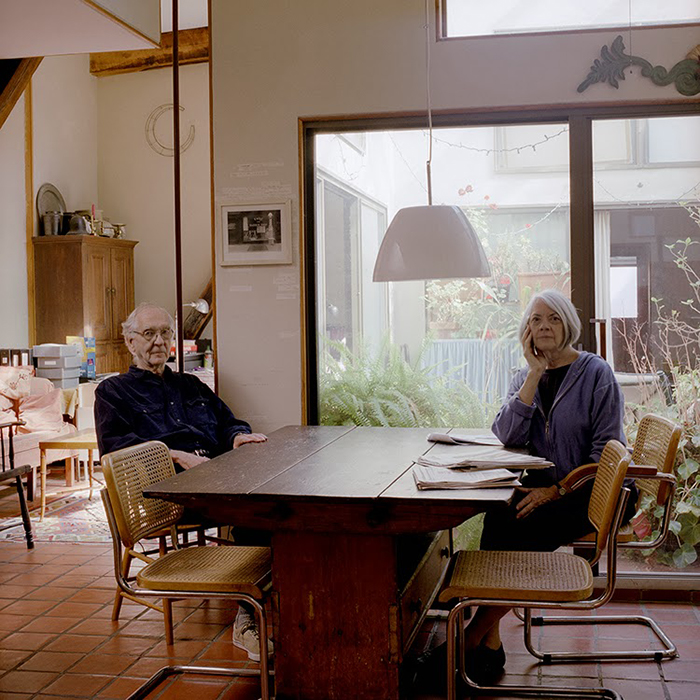
Emily & Will Brown in Philadelphia, PA by Tanja Hollander.
KNOLL INSPIRATION: How did you find yourself embarking on this photographic enterprise? What were you trying to discover?
Tanja Hollander: I don’t know if I was trying to discover anything, but it began with a question and it’s become a lot of questions. It was New Year’s Eve and I was instant messaging a friend who was working on a film in Jakarta while at the sametime I was handwriting a letter to a friend who was deployed in Afghanistan. I started thinking about the nature of those two friendships—which are from different points in my life and equally important—and the two different ways of communicating: the handwritten letter versus the instant message. That got me on the topic of how we communicate in the 21st century and what the internet and social media have done to change our behavior and how we relate to each other. Then I had to figure out if any of this is even photographable. If it is, how do you do it?
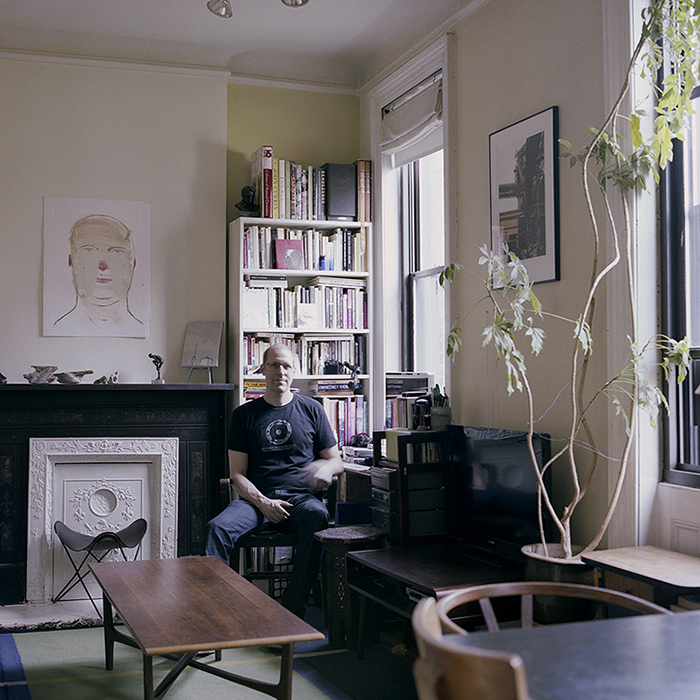
Adam Hurwitz in New York, NY by Tanja Hollander.
What’s your process for contacting Facebook friends and getting people on board with this project?
I instant message people, email them, or call them and generally give them three chances to respond. If they don’t respond at all then I defriend them, because I feel that if you don’t have the courtesy to say, “I don’t want to be a part of it” or explain, “I’m out of town,” it begs the question were we friends to begin with. I’m fine with people saying "no," I just appreciate the courtesy of a response.
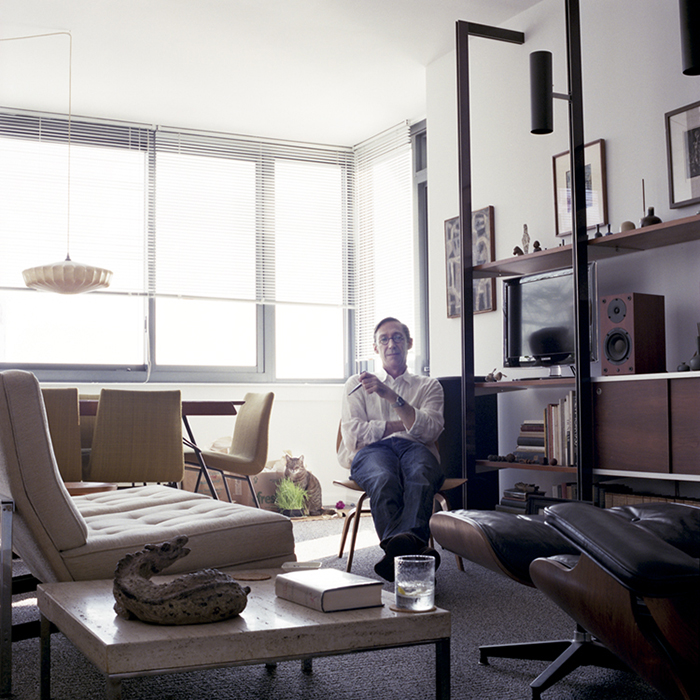
Jay Kelly in Queens, NY by Tanja Hollander.
Given that your project straddles the border between both digital and analogue experience, what explains the physical appeal of using film?
The project is both digital and not digital. I’m going back and forth in the making of the work, the presentation of the work, and the concept of work, as it relates to friendship and how we communicate. But I’ve also always shot on film, which results in better quality photographs than digital. It would be much easier to shoot these digitally, let me tell you, but the quality of the portraits is as important to me as the project itself.
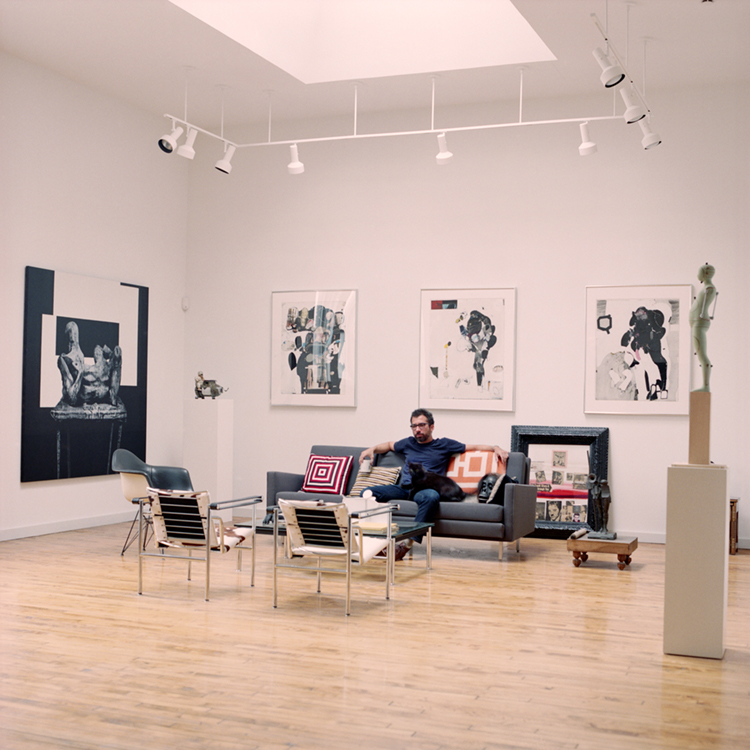
Matt Strauss in St. Louis, MO by Tanja Hollander.
You've mentioned that visualizing data is importantant aspect of the project? What kind of data are you collecting and how are you presenting it?
I'm working on that now. I'm trying to collect demographic data, receipts (I’ve saved all of my boarding and subway passes), and travel metrics (distance, time, and modes of transportation). I want to visualize all that stuff.
I also want to do some kind of animation that shows what these four years look like quantitatively, and capture all the behind-the-scenes stuff that goes into a huge project like this, the minutiae that one doesn't necessarily think about.
The other data component relates to the first show I did at the Portland Museum of Art here in Maine. I asked people in the audience to write down the answer to the question “What is a real friend?” on a Post-it note. And it's so funny because while the answers are different, the sentiment remains the same. I want to visualize the keywords that come up over and over again. I have thousands scanned so far.
What is it about that intimacy of one’s own home that compels you to photograph your subjects in a domestic setting?
It started because I was renovating my house and I wasn’t taking a lot of photographs at the time, because the house had become my art piece, a kind of giant installation. I started thinking about how important space was to me, and how a true friend is someone you have over for a meal, perhaps drink too much red wine, and argue about art and politics and are still friends in the morning. So, it was really important that people let me into their homes. Architecture and design are my second loves and in many ways I think you could take the people out the photographs and have the homes stand on their own.
That’s changed over time, though. In the beginning, I was much more interested in the home itself and how people create homes. Now I’m much more interested in how people create communities, so the scope has broadened from the hyper local to the general local. Because over and over again people are eager to take me to parks, restaurants, music festivals, and the like.
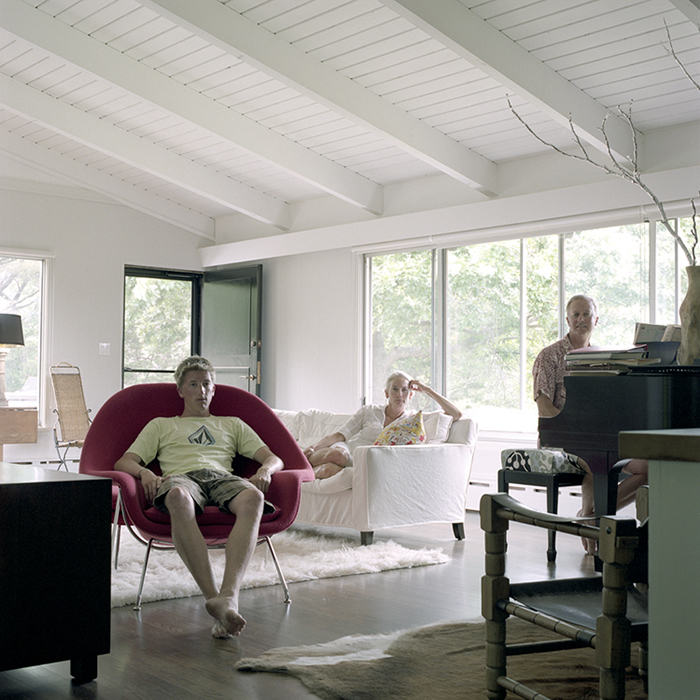
Rachel Perry, Welty Bruce, & Asa Welty in Gloucester, MA by Tanja Hollander.
In the process of staging a shoot, do you find that constructing the photographic environment frames your perspective on your subject?
When you come into somebody’s house, there is usually one room where people gather. It’s generally the kitchen, but occasionally it’s the living room. I come in, I sit down wherever seems normal to sit, and then I try to remove myself from the situation. If they’re standing, then I’ll shoot them standing; if they’re sitting, then I’ll shoot them sitting. I don’t ask them to move unless they’re standing near a window and there’s a lot of light coming in. I don’t style or construct the scene, although I might move a chair if it’s right in the way. Likewise, I try to stop people from moving piles of stuff and tidying up in general.
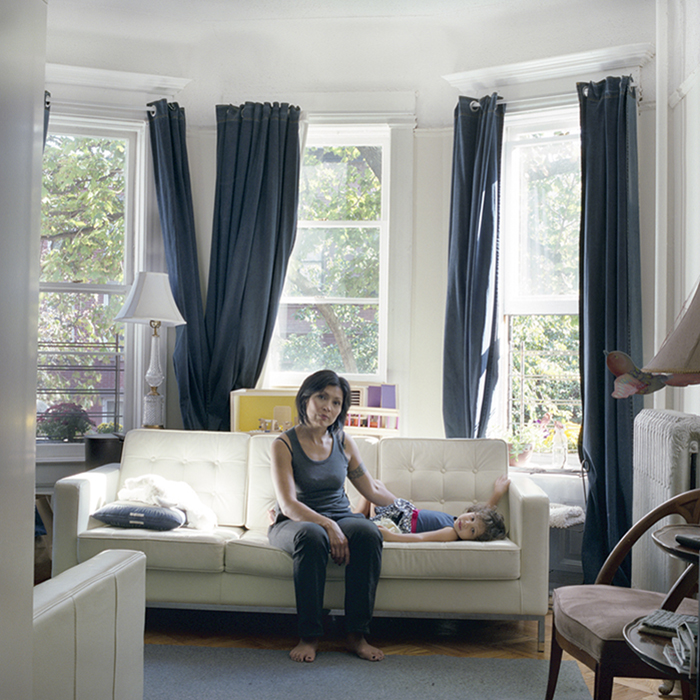
Rosy Ngo & Plum Vagnetti in Brooklyn, NY by Tanja Hollander
Your photographs appear to split the difference between a kind of fostered rapport and self-imposed critical distance. How would you describe your relationship with your photographic subjects?
I think there’s a switch from “social time” to “work time” that occurs when I start to photograph. The actual shoot doesn’t take very long, twenty minutes max, but when I’m shooting, I have to focus on the fact that I’m trying to shoot in the same style for every photograph (that is, with as much natural light as possible and with as wide of an angle as I can manage).
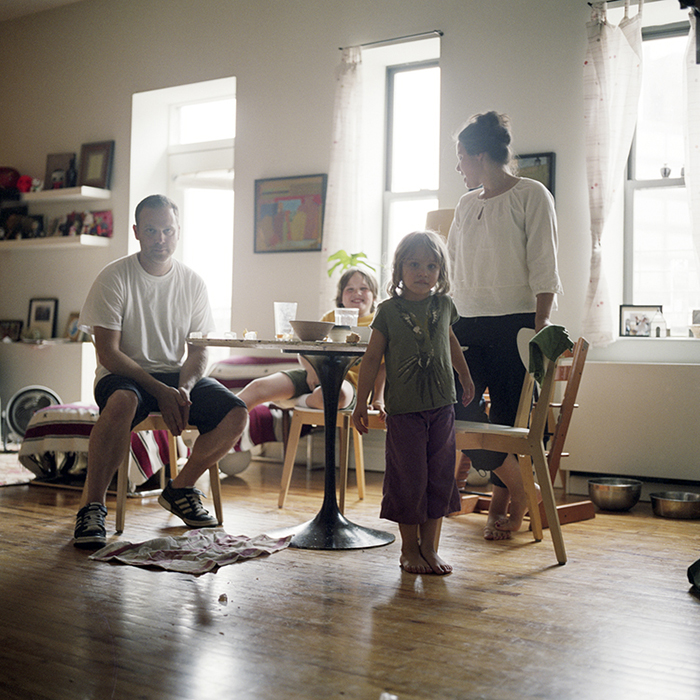
Shara Frederick, Andy Oscar, & Zelde Monteleone in Brooklyn, NY by Tanja Hollander.
What, if anything, does furniture communicate about its owner?
It’s the same way in which people wear clothes to communicate their identity. For people who are creative types, the objects they surround themselves with are really important. On the other hand, I’ve had people say, “You know the stools, in that one house in Brooklyn. I love those, where can I get them?” When you go to the Facebook page, you can see people posting those kinds of things all the time.
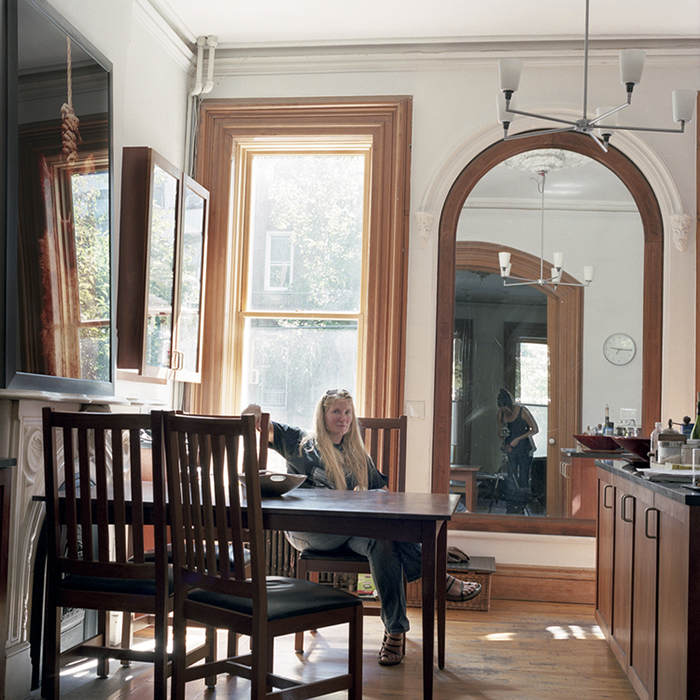
Flo Lunn in Brooklyn, NY by Tanja Hollander.
There's a photograph in which you become a part of the composition; your reflection can be glimpsed in a mirror. Can you comment on this element of reflexivity?
I can think of one photograph of me in a Brooklyn home, but it wasn’t intentional all. The mirror happened to be a large part of that room, so my reflection became part of the image.
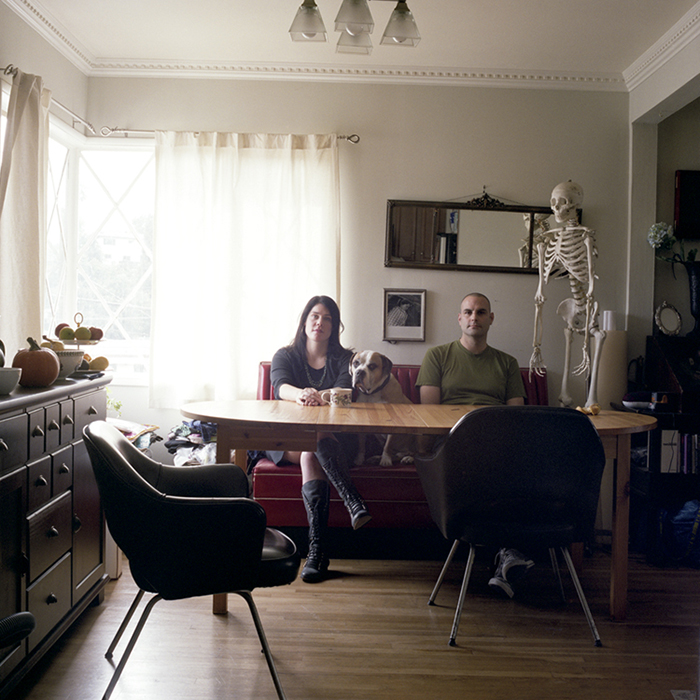
Siri Kau, Troy Morgan, & Claude the dog in Los Angeles, CA by Tanja Hollander.
What do you see when you look at these photographs?
I see that they’re getting much better [laughs] I mean I’ve been doing this a long time. At first, I wasn’t conscious of the floor-to-ceiling composition, I would cut things off because I wasn’t taking in the whole environment. Now, I’m much more conscious of door knobs, for instance, and making sure that I've captured as much detail as possible within the frame. I want to get the lighting fixtures, the door knobs, the type of flooring: linoleum, wood, carpet. In short, I want to see as much detail as possible. I think I notice things that no one else would notice.
All images are courtesy of Tanja Hollander.


























